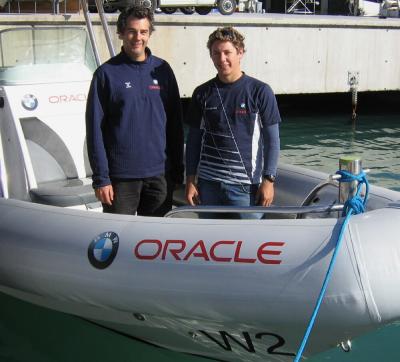Weather Eye in the Sky -- and on the Water Feb 17, 11:20
On this day in 1959 Vanguard 2 was launched. The first-ever earth orbiting weather satellite, it was designed to measure cloud-cover distribution over the daylight portion of its orbit.
We mentioned this historical footnote to Chris Bedford today, and he offered to help put it in perspective....
"Modern-day weather forecasting would be impossible without weather satellites," Chris said. "The way in which they impact our daily lives is astounding, really. Imagine a time when [Europeans] had no idea what weather systems where lurking over the North Atlantic Ocean, poised to bring rain on your grape vines or worse, flood your village!
"Today, computer models translate satellite images into numerical representations of the atmosphere. These models then predict the movement of the associated weather systems and in turn, allow us to define and forecast the winds in general over an entire continent, and, more specifically, on the America's Cup course, with amazing accuracy. Even still, we can't see everything with a weather satellite. Our weather team of Rod Dawson, Nathan Williams, and Jeff Clark keep a close up view on the clouds from below, and on the water, for that critical final call just before the 5 minute signal."
 First weather eye in the sky. Photo courtesy of NASA and Wikipedia.
First weather eye in the sky. Photo courtesy of NASA and Wikipedia.
 Met head Chris Bedford (USA) with his deputy Rod Dawson (NZL) in their
Met head Chris Bedford (USA) with his deputy Rod Dawson (NZL) in their
new office at the team base.
 Met team members Nathan Williams (NZL) and Jeff Clark (NZL) -- four
Met team members Nathan Williams (NZL) and Jeff Clark (NZL) -- four
more weather eyes on the sky and water.
We mentioned this historical footnote to Chris Bedford today, and he offered to help put it in perspective....
"Modern-day weather forecasting would be impossible without weather satellites," Chris said. "The way in which they impact our daily lives is astounding, really. Imagine a time when [Europeans] had no idea what weather systems where lurking over the North Atlantic Ocean, poised to bring rain on your grape vines or worse, flood your village!
"Today, computer models translate satellite images into numerical representations of the atmosphere. These models then predict the movement of the associated weather systems and in turn, allow us to define and forecast the winds in general over an entire continent, and, more specifically, on the America's Cup course, with amazing accuracy. Even still, we can't see everything with a weather satellite. Our weather team of Rod Dawson, Nathan Williams, and Jeff Clark keep a close up view on the clouds from below, and on the water, for that critical final call just before the 5 minute signal."
 First weather eye in the sky. Photo courtesy of NASA and Wikipedia.
First weather eye in the sky. Photo courtesy of NASA and Wikipedia. Met head Chris Bedford (USA) with his deputy Rod Dawson (NZL) in their
Met head Chris Bedford (USA) with his deputy Rod Dawson (NZL) in theirnew office at the team base.
 Met team members Nathan Williams (NZL) and Jeff Clark (NZL) -- four
Met team members Nathan Williams (NZL) and Jeff Clark (NZL) -- fourmore weather eyes on the sky and water.
History | by TFE